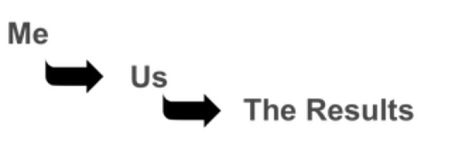Creating a Coaching Culture 1
In today’s guest post Ben Morton shares 6 tips about:
Creating a Coaching Culture
By Ben Morton
“45% of organisations plan to utilise Coaching to drive organisational performance in the next two years”
(Chartered Institute for Personnel and Development)
The prevalence of coaching in the workplace and the value that organisations place on it are both continuing to rise month by month and year on year. The research from the CIPD and other institutes shows this growth as does our own experience at TwentyOne Leadership. Over the last few months we’ve been asked numerous times how we go about helping to create and sustain a high performance, coaching culture.
There are lots of elements to consider, but here are our 6 top tips.
- Make Great Coffee
You may walk into a beautifully designed coffee shop that has great service, lots of space and lovely places to sit, but if the coffee sucks then it’s unlikely that you’ll ever go back. Building a coaching culture is no different. At its heart lays the ability of your people to be great coaches and this has to be the starting point. This foundation must be solid or anything else that you do will have little impact and is unlikely to last.
- Get Clear on Your Measures
This is about getting clear on the measures that already exist. It’s ultimately about getting clear on the higher purpose that you are working towards and using coaching to support. When your coaches operate from a position of clarity and understanding of the bigger picture they are able to focus their coaching on what matters most. This enables those being coached, the coaches and the organisation to see the impact it is having.
- Do It and Shout About It
The Law of Diffusion of Innovation is key – you don’t need to convince everybody in the organisation of the value and benefit of coaching. By developing an initial group of fantastic coaches (your Innovators and Early Adopters) they are able to go out into the business and do great work coaching. When this is done well and you shout about the success you reach the critical tipping point where you have engaged the “Early Majority”. And then you’re off – you have the foundations of a Coaching Culture.
- Waterfalls not Trickles
Building a Coaching Culture requires momentum and a plan for building that momentum. Whilst the Law of Diffusion of Innovation will help you, you can’t rely on it alone to transform the business. Once you’ve developed your initial group of coaches it’s time to grow the pool – this may be managers or it may be volunteer coaches from all levels and parts of the organisation. Whatever approach you take – speed is of the essence.
- The Before and After
Coaching and training your coaches is about more than just what happens in the session or on the training courses. What happens before (Set-Up) and what happens after (Set-Down) is critical. Great coaches understand that they can be of even more service to those they are working with if they give just a little thought to what they do before and after each session.
The same is true of how coaches are trained, developed and supported in the long run. Ongoing training, coaching supervision and networks help build momentum, expertise and credibility.
- Don’t Let It Be An Island
Don’t let coaching be another new initiative that sits separate to everything else in the business like an island in the ocean. For a Coaching Culture to really take root it must be entwined and linked to everything else that’s happening in the organisation (Click to Tweet). It needs to be aligned to the measures that matter. The language that is used needs to be consistent with that used elsewhere and coaching needs to be smoothly integrated with your performance management systems. If coaching is seen as just ‘another new initiative’ it won’t stick.
About Ben Morton
Ben is a Chartered Member of the CIPD with approaching two decades of experience in leadership, learning and management. His broad range of experience is gained from roles including Group Head of HR and Training for a global subsidiary of TUI Travel and more recently 2-years in the Global Training Academy at Tesco.
He began his career in the British and trained at the Royal Military Academy Sandhurst. Following two operational tours of Iraq, Ben retired his commission as a Captain leaving the Forces in 2006.
Ben specializes in two key areas. Helping individuals moving into their first leadership role or those whose careers have progressed rapidly, finding themselves leading large and often very experienced teams. Secondly, he works with clients to enable them to understand what is required to develop high performing, highly effective teams.
You can find out more about Ben’s work via his blog, Unlocking Team Potential, or via his LinkedIn profile.
Ben has just released his “Don’t Just Manage Coach” book which is for managers who really believe in developing their team members and coaching them to unlock their full potential.





 Ben Morton is a Leadership Consultant at
Ben Morton is a Leadership Consultant at